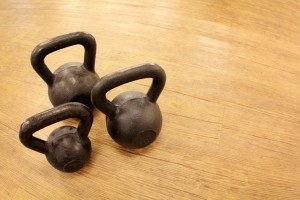Strength training…
Lifting weights…
Pumping iron…
Not just for Arnold Schwarzenegger!
Why is strength training important?
- Bone health! When weight training, you’re putting a stress on the bones which promotes bone growth and minimizes the risk of osteoporosis. This is especially important in post-menopausal women.
- Maintaining strong muscles as you get older! Ever heard of “use it or lose it?” As we age, we lose not only bone density but muscle mass as well. This is approximately 1% per year. By weight training we are actively maintaining (and even improving) our muscle mass and strength. As we get older this allows us to maintain our level of function and independence for longer.
- Weight training is also helpful for weight management! By burning more calories, you can maintain a healthy weight. Additionally, strength training can actually boost your metabolism! If you’ve recently lost weight, this can help keep the weight off.
- Improved body mechanics (as long as you are performing the exercises correctly)! As your muscles become stronger and more efficient, balance, flexibility, and posture can improve as well. For older adults this means up to a 40% reduced risk of falls!
- Health management! For example, strength training has been shown to be an effective alternative to medication for decreasing arthritis pain. For orthopedic conditions such as rotator cuff tendinopathy or back pain, strength training can reduce pain and improve function. It is also beneficial for managing chronic conditions such as diabetes. Strength training can be as effective as aerobic training in decreasing risk of coronary heart disease.
- Endorphins! What you’ve heard is true. Strength training will increase endorphin release, which can improve your energy and mood!
Is strength training for me?
If you are healthy, yes! If you have pain in your muscles or joints, seek out a physio for an appropriate exercise program specific to your needs. If you have coronary heart disease, seek clearance from your doctor. If you’ve had cardiac surgery, cardiac rehab is a great place to start!
As we get older, strength training is actually more important in order to stave off the effects of chronic conditions and osteoporosis (especially in post-menopausal women), as well as maintain our function and independence, and reduce the risk of falls!
Is strength training safe for older adults?
Yes! If anything, it’s even more important. See above!
In fact, it is recommended that healthy older adults train 3-4x weekly. If there are health concerns, speak to your doctor or physiotherapist for advice on how to begin and what to avoid!
If I strength train, will I get too bulky?
This is a common myth that stops many from picking up the weights. The short answer is no.
Significantly increasing your muscle bulk is something bodybuilders train aggressively and follow specific meal plans to achieve. It does not happen easily and does not happen overnight.
What really happens with strength training is you get stronger muscles and increased metabolism which helps burn more fat. When you lift “heavier” weights, i.e. weights that challenge you, you are creating micro-tears in the muscles. As these heal, the muscle gets stronger and slightly bigger. At the same time, since muscle is more dense than fat, by creating a bit more muscle and reducing your fat, you actually become leaner or more “toned.”
How do I start?
If unsure how or where to start you can do your own research, or go to a personal trainer or a physiotherapist to develop an exercise plan tailored to your needs. If you have health issues, it may be a good idea to get cleared by your doctor first.
You don’t need a whole stack of weights, expensive machines, or even a gym membership. Using your body weight is a great place to start. For example, squats, lunges, steps, push-ups, etc. all use your body weight.
When using weights (or even resistance bands, e.g. Theraband) you are doing resistance training, i.e. contracting your muscles against a resisting force.
Whether you start out with or without resistance, you are still doing strength training.
Often, exercise parameters will suggest something along the lines of 3 sets of 10 repetitions. You perform 10 repetitions of the exercise, take at least a 30 second break, then perform another set of 10 repetitions. You can also cycle through several exercises once before doing another set of them all.
If using resistance, you should be able to get through a set of 8-10 repetitions though toward the end, the difficulty should increase and you should be feeling more fatigued. If you can get through 3x10reps no sweat, then the resistance is too light. If you are struggling with just the first few repetitions, it is too heavy. If working on your endurance, it’s okay to use a lighter weight but going into 20 repetitions per set.
As the micro-tears in your muscle occur, you will get muscle soreness. It’s good to rest from strength training the next day to let the muscles recover. Ideally, strength train on alternating days.
You Physiotherapist is an excellent member of your health care team to set you up with a program. They can ensure that you are safe with your movements. You Physio will also make sure you are the most efficient with your training.
References
Holten, M.K., et al. (2004). Strength Training Increases Insulin-Mediated Glucose Uptake, GLUT4 Content, and Insulin Signaling in Skeletal Muscle in Patients With Type 2 Diabetes. Diabetes, 53(2): 294-305.
Hurley B.F. and S.M Roth. (2000). Strength Training in the Elderly: Effects on Risk Factors for Age-Related Diseases. Sports Medicine, 30(4): 249–268.
Mayer, F., et al. (2011). The Intensity and Effects of Strength Training in the Elderly. Dtsch Arztebl Int., 108(21): 359–364.
Pratley, R., et al. (1994). Strength training increases resting metabolic rate and norepinephrine levels in healthy 50- to 65-yr-old men. Journal of Applied Physiology, 76(1): 133-137.
Smutok M.A., et al. (1993). Aerobic versus strength training for risk factor intervention in middle-aged men at high risk for coronary heart disease. Metabolism, 42(2): 177-184.




